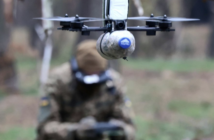Welcome to the CavasShips Podcast with Christopher P. Cavas and Chris Servello…a weekly podcast looking at naval and maritime events and issues of the day – in the US, across the seas and around the world.
This Week…Fifteen months after the disastrous fire aboard the USS BONHOMME RICHARD the US Navy finally released its investigation into the matter. The report is scathing in its recitation of deplorable events and actions all leading to the loss of the ship. We’ll discuss the findings as well as where the Navy goes from here with journalist Sam LaGrone of USNI News, who were the first to report in depth on the investigations.
In this Week’s Squawk Chris Cavas discusses the Bonhomme Richard fire.
Please send us feedback by DM’ing @CavsShips or @CSSProvision or you can email chriscavas@gmail.com or cservello@defaeroreport.com .
This Week’s Naval Round Up:
The US Navy on October 20 released its long-anticipated investigation report into the July 2020 fire that effectively destroyed the 41,000-ton assault ship BONHOMME RICHARD at San Diego. The report, along with a review of recent major ship fire released at the same time, details hundreds of points of failure that led to the loss of the ship. It also named 36 individuals, including five current or now-retired flag officers, for actions or inactions leading to the loss of the ship. The report’s release prompted widespread coverage from mainstream media worldwide. As we said, we’ll talk more about the reports in a couple of minutes.
The Chinese and Russian navies staged a major provocation October 18 when a combined 10-ship force passed through the Tsugaru Straits between the Japanese main islands of Honshu and Hokkaido. The warships – five from each Navy – continued into the Pacific Ocean, all the while closely monitored by Japanese self-defense forces. It was the first such Chinese or Russian military passage through the straits, which are only 12 miles wide at their narrowest point, although the center of the strait is considered to be international waters. The move is the latest in an escalating series of freedom-of-navigation, or FONOPS passages through disputed or narrow waterways. As recently as October 14, the US destroyer DEWEY and Canadian frigate WINNIPEG made a Taiwan Strait passage between Taiwan and the Chinese mainland – a roughly monthly transit that China routinely protests.
Britain’s Carrier Strike Group 21 with HMS QUEEN ELIZABETH joined with the US carrier CARL VINSON and Japanese KAGA in the Bay of Bengal on October 17 for a Major Partnership Exercise. It was another display of force in the region and followed the just-concluded Malabar exercises with India, the US, Australia and Japan. QUEEN ELIZABETH is now on the homeward-bound leg of her deployment, with exercises scheduled in the Arabian Sea and elsewhere over the next several weeks.
The Brazilian Navy’s sail-training ship CISNE (SIS-NE) BRANCO was damaged October 18 in a spectacular accident in the port of Guayaquil (Why-a-Keel), Ecuador. Caught while being maneuvered by tugboats in strong current, the ship crashed into a large pedestrian bridge and suffered severe damage to her foremast, while a small Ecuadoran Navy tug was pulled over and capsized. Numerous videos of the accident quickly appeared on social media, but there were no injuries.
On October 15 the destroyer USS JOHN S McCAIN arrived at its new homeport of Everett, Washington, part of a large transition of mostly older US warships swapping homeports in Japan with newer ships. McCAIN was forward-deployed to Yokosuka, Japan since 1997.
And the cruiser USS GETTYSBURG was back at sea in mid-October – for the first time since mid-2015. The ship is one of several US Navy cruisers that have essentially been out of service for some years awaiting major modernization overhauls. The overhauled ships are intended to replace up to seven cruisers the Navy wants to decommission over next year in the face of Congressional opposition.
And that’s a look at Navy news stories this week.
CAVAS SQUAWK–It’s hard to know where to start – or end for that matter – in considering the BONHOMME RICHARD fire and what these reports have found. To say the least, the findings are disturbing. A crew completely unprepared to deal with an in-port fire aboard a ship still in a major maintenance state, a shore-based support establishment unprepared to handle the fire from its earliest stages, all driven by ineffective oversight from multiple commanders and authorities. Although arson is listed as the cause of the fire, it really doesn’t matter – as far as the Navy should be concerned, a fire broke out, then what happened? Never before in the 246-year history of the US Navy had a fire broken out aboard a warship in a major base and burned for four and half days. The ship and the two-billion-dollar-plus investment it represented was lost.
One of the recurring findings of the investigations is that in the aftermath of the 2012 fire and constructive total loss of the nuclear-powered submarine MIAMI – another event without precedent – the many fleetwide lessons learned and corrective procedures to be implemented were forgotten or simply ignored. The Navy paid great attention to the MIAMI fire, but the most recent investigations show that many sailors and their command authorities simply went on with a business-as-usual attitude. It makes one wonder – what does it take to get the Navy to change a culture that clearly has fundamental, systemic problems.
I don’t know. Despite all the attention paid this week to the BONHOMME RICHARD fire – all the verbiage and hand-wringing — I wonder how many of those lessons will stick. I don’t like to admit it, but my gut feeling is the worst is still to come.




